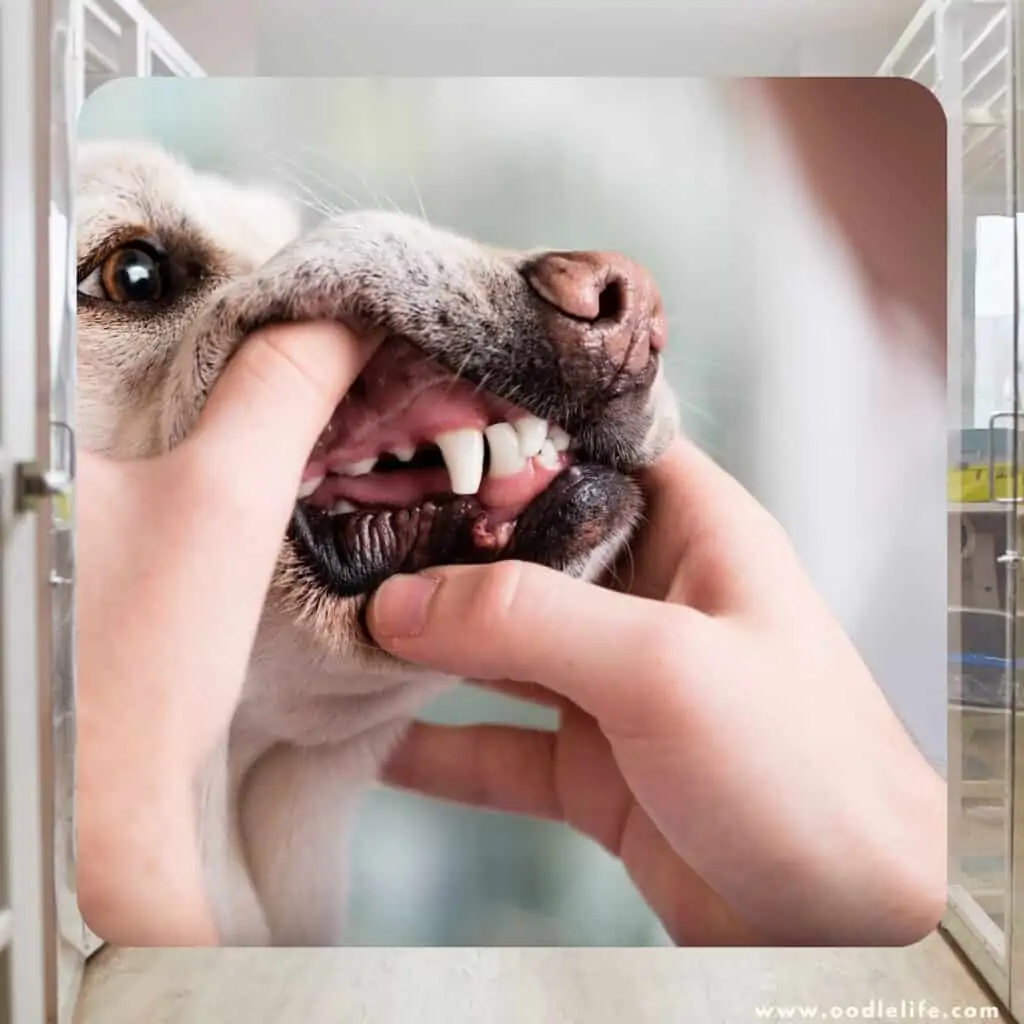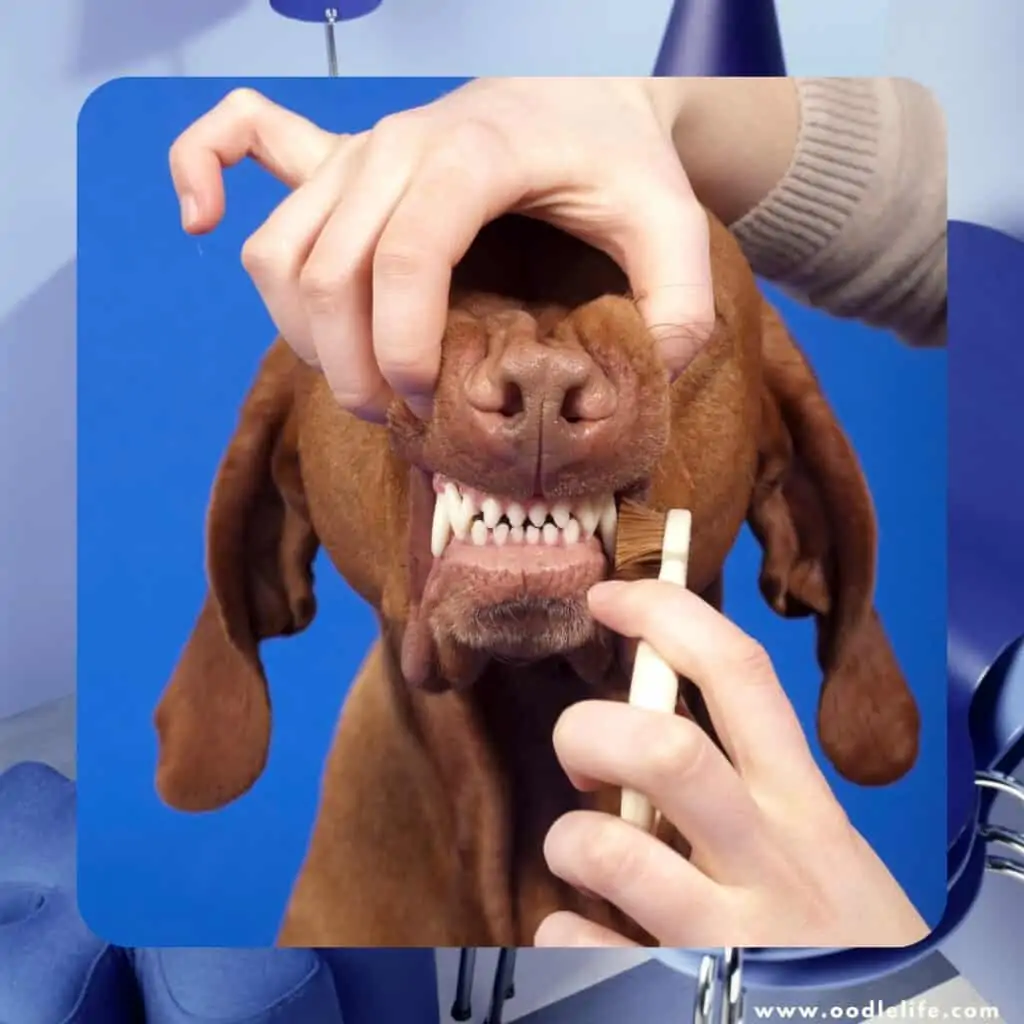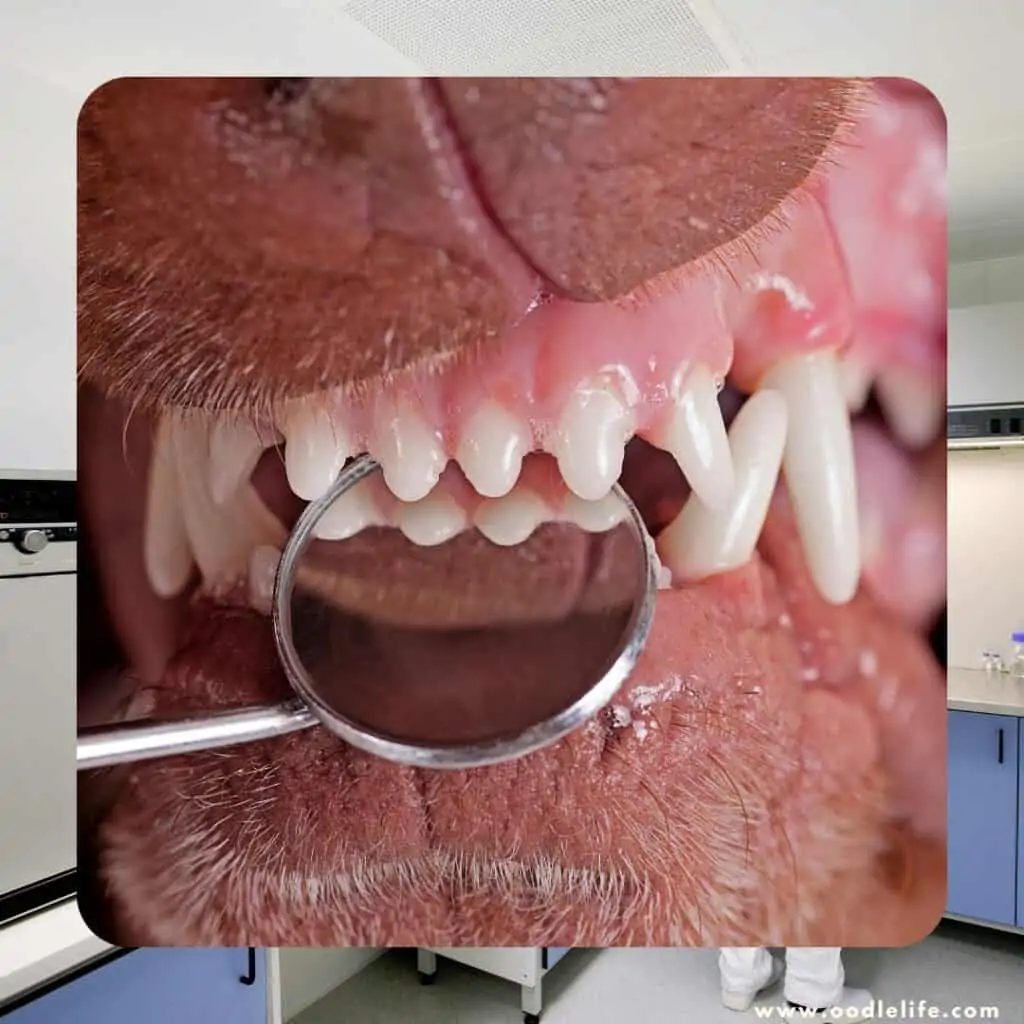Help! My Dog Ate Dental Floss
Puppies are adorable and loveable but tend to explore everything. Your pup has probably eaten some things he or she shouldn’t, whether that’s a sock, some cheese, or your computer cord. However, not everything a pup explores is safe for consumption.
Some things make it past the mouth and end up in the digestive tract, and this can cause major problems.
If you’re at this page, however, you already know this. The odds are not high that you came here for some light reading. It’s a safe bet that your dog got into the bathroom cupboard and found your dental floss.
Now you’re wondering: What do I do if my dog ate some floss? Is it dangerous, or will it just help clean their teeth? Let’s explore the issue.
My Dog Ate Dental Floss – What Should I Do Now?

The short answer is, it depends on how much floss your dog ate. If your dog only ate a few inches of dental floss, you might not have anything to worry about. Canine digestive systems are pretty hardy (a good thing too, considering all of the random objects they eat), and a few inches of the string will come out the other end in a few days.
Dental floss seems like an innocent object, but a lot of it can cause serious illness for a dog. The first thing to do is call your veterinarian—you must have a medical professional who knows your dog. They can give you professional advice based on your particular situation.
If the entire spool is gone, you might have a serious problem on your hands. The string won’t break down inside of a dog’s intestines. If the length isn’t short enough to be digested, it could wrap around the stomach and gut and cause an intestinal blockage. If not treated quickly and thoroughly, this will lead to death.
If your pup ate more than four inches of dental floss, they are at risk for a bowel obstruction. Take them to the emergency clinic immediately to induce vomiting. If you can’t get them to vomit at home or the clinic and the dog is showing symptoms of bowel obstruction, emergency surgery might be necessary.
How to Induce Vomiting in a Dog
If you’ve never induced vomiting in your dog before, take them to the vet. While the process isn’t too difficult, it can cause health issues, and it’s always best to ask a health professional before trying it at home.
However, it’s vital to induce vomiting less than two hours after the dental floss or string was ingested. If there’s no way to make it to a clinic before then, carefully follow the steps to help your dog vomit up the dental floss and save them pain and surgery later:
- Measure one teaspoon of 3% hydrogen peroxide for every five of your dog’s weight, with a maximum of five tablespoons.
- Gently feed your dog the hydrogen peroxide with a syringe.
- Allow fifteen to twenty minutes for your dog to digest the peroxide and begin vomiting. Keep them in an easily cleanable space.
- Once the dog is done throwing up, examine the vomit for the dental floss.
Important: Contact your veterinarian before inducing vomit, whether or not you’ve done this before. Always notify your vet of what you see in the vomit, and they can prescribe medicine to finish flushing out the dog’s system. If your dog doesn’t stop vomiting or the floss doesn’t come up, seek medical help immediately.

Symptoms of Bowel Obstruction
If your dog swallowed some dental floss and you haven’t been able to induce vomiting, get medical care for the dog. It’s better to find an animal clinic before the dog starts showing symptoms of bowel obstruction: at that point, it will be difficult to help the dog without intense surgery.
Floss or string wrapped around a dog’s intestines will stop the flow of food and gastric juices. The dog will not use the restroom or digest regularly and will be in severe pain until the problem is gone. If the dog isn’t given help, it will die. Here are the symptoms of bowel obstruction in dogs:
- Loss of appetite
- Constipation
- Strain during defecation
- Abdominal pain
- Abdominal swelling

What is in Dental Floss?
Dental floss is made from string, either Teflon or nylon. Unflavored dental floss is coated in wax, then spooled around the plastic packaging. If the dental floss is flavored, the nylon is pulled through flavoring before being coated in wax.
The flavored coating is non-toxic and generally comes off in the mouth. However, the string of dental floss cannot be swallowed and could cause bowel obstruction in both humans and animals. This is why your dog swallowing dental floss is such a serious matter.
What Will Dental Floss Do to My Dog?
After finding out that your dog got into the dental floss, the big question is: how much did it eat? If the strand was four inches or less, your dog will most likely digest it regularly and move on, forgetting the incident ever happened. However, a longer strand is likely to wrap around the dog’s intestines and cause severe pain and obstruction.
Once a dog’s bowels are obstructed, it will take surgery to remove the obstacle. While waiting, the dog will be in immense pain, not eat, and be at higher risk for internal bleeding and infections. The signs of bowel obstruction are obvious and if your dog is showing any of them, get medical help as soon as possible.
Any string or long, thin object could cause this pain to your dog. Always watch a dog make sure they’re not eating things they shouldn’t. Dogs are naturally inquisitive and love to try new things. It’s your job to ensure they’re not hurting themselves in the process!
Final Thoughts
Dental floss is excellent for keeping your teeth clean but won’t do the same for your dog’s intestines. Keep the floss on a high shelf and make sure your dog has enough toys that they don’t go exploring. It’s always better to prevent an accident than to have to call the vet in a panic. The best thing is always to keep a dog safe!